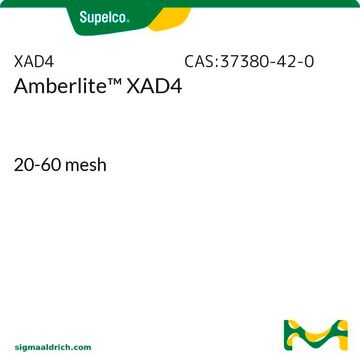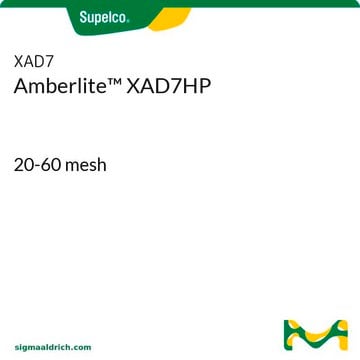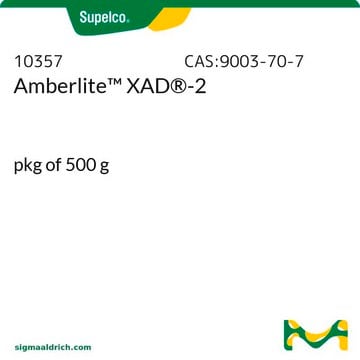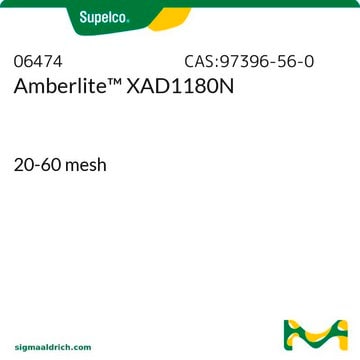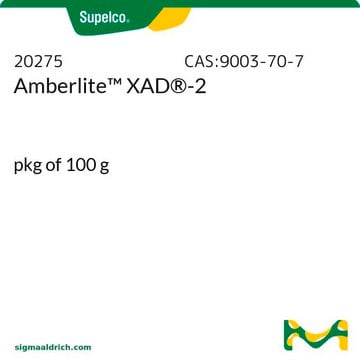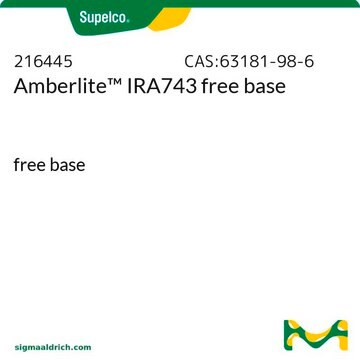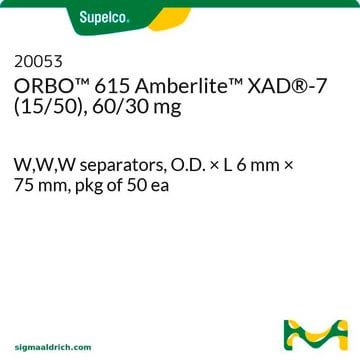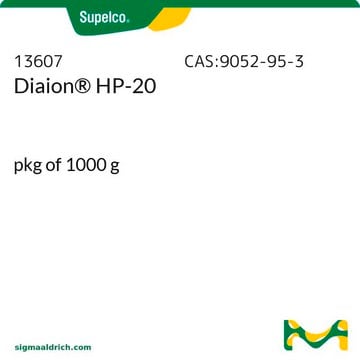XAD16
Amberlite™ XAD16N polymeric adsorbent
20-60 mesh
Synonym(s):
XAD16N
About This Item
Recommended Products
product name
Amberlite™ XAD16N, 20-60 mesh
form
beads
technique(s)
LPLC: suitable
surface area
800 m2/g
matrix
styrene-divinylbenzene
matrix active group
polymer
particle size
20-60 mesh
560-710 μm
pore size
~0.55 mL/g pore volume
200 Å mean pore size
separation technique
reversed phase
InChI
1S/C10H16N2O/c1-11-4-2-3-10(11)9-12-5-7-13-8-6-12/h2-4H,5-9H2,1H3
InChI key
ZPPCOAPTXYJLTG-UHFFFAOYSA-N
Looking for similar products? Visit Product Comparison Guide
General description
Application
Other Notes
Legal Information
Storage Class Code
11 - Combustible Solids
WGK
WGK 3
Flash Point(F)
Not applicable
Flash Point(C)
Not applicable
Personal Protective Equipment
Certificates of Analysis (COA)
Search for Certificates of Analysis (COA) by entering the products Lot/Batch Number. Lot and Batch Numbers can be found on a product’s label following the words ‘Lot’ or ‘Batch’.
Already Own This Product?
Find documentation for the products that you have recently purchased in the Document Library.
Customers Also Viewed
Our team of scientists has experience in all areas of research including Life Science, Material Science, Chemical Synthesis, Chromatography, Analytical and many others.
Contact Technical Service